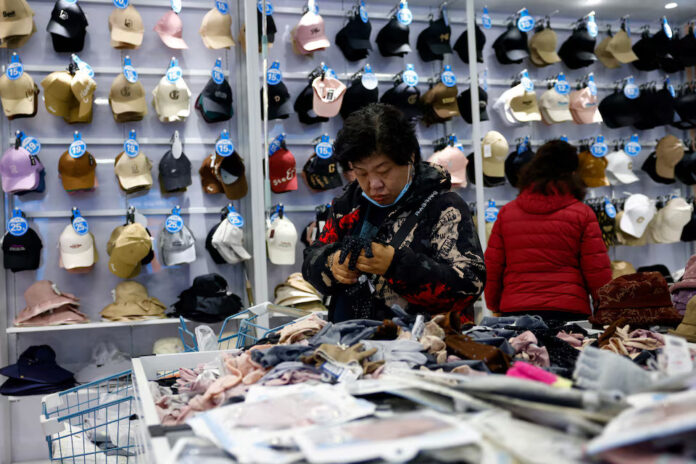China’s factory-gate prices fell at their fastest pace in six months in April, while consumer prices dipped for a third straight month, reinforcing concerns over weak domestic demand and rising pressure for additional economic stimulus.
Data released Saturday by the National Bureau of Statistics showed the producer price index (PPI) declined 2.7% year-on-year in April, steeper than the 2.5% drop recorded in March but slightly better than economists’ expectations for a 2.8% fall.
Consumer prices (CPI) also slipped 0.1% from a year earlier, matching March’s decline and aligning with forecasts. On a monthly basis, CPI rose 0.1% in April, rebounding from a 0.4% drop in March.
Core inflation—which excludes volatile food and fuel prices—remained subdued at 0.5%, the same as in March.
“Deflationary pressure remains persistent,” said Zhiwei Zhang, chief economist at Pinpoint Asset Management. “Exports are likely to weaken in the months ahead, which could worsen the situation. Even with trade talks between China and the U.S., it’s unlikely tariffs will revert to pre-April levels. More aggressive fiscal action is needed.”
China is contending with a combination of internal and external challenges: a prolonged property market slump, high household debt, and weak job security, all of which continue to suppress spending and investment. The ongoing trade war with the U.S. adds further strain, though a new round of bilateral negotiations begins Saturday in Switzerland, raising hopes for some de-escalation.
To counter these headwinds, Chinese authorities have announced interest rate cuts, injected additional liquidity, and rolled out broader consumption-boosting measures.
Meanwhile, major domestic retailers such as JD.com and Alibaba’s Freshippo are helping exporters shift toward the local market, though analysts warn this pivot may intensify price competition and further dampen confidence.
Global banks like Goldman Sachs have already lowered China’s 2025 GDP growth projections below the government’s 5% target, citing the toll of prolonged trade frictions and weakening global demand.























